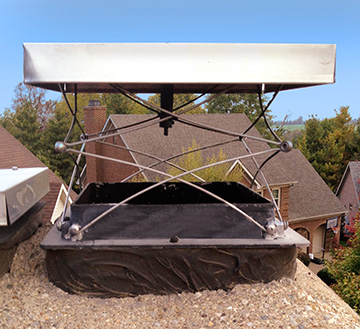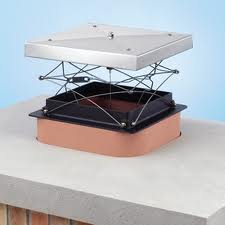Is Your Fireplace Damper Causing Higher Energy Costs?
 Is your fireplace damper working correctly? If it’s not, it could be costing you literally hundreds of dollars in utility costs every year.
Is your fireplace damper working correctly? If it’s not, it could be costing you literally hundreds of dollars in utility costs every year.
The fireplace damper, also called a chimney damper, is just above the fireplace in the throat of a masonry chimney. The purpose of a damper is to seal off the fireplace when not in use. If it performs as it should, a damper prevents the heated air in your home from escaping up the chimney, and it also keeps the cold outside air from coming in. It’s a completely different story if your fireplace damper is leaky or left open. Imagine leaving a window open year around; that is, in effect, what’s happening if the damper doesn’t form a proper seal or if it’s left open.
The Cost of a Faulty or Open Damper
Research has shown that as much as 8% of your wintertime heating costs can be attributed to heated air going up the chimney. If a damper is left open after fires die down, the overall energy cost of heating and cooling increases by 30%.
Dampers are typically steel or cast-iron, and the seal they form can be even less effective if moisture in the chimney has caused rust or corrosion. There is one more factor which makes the lack of efficiency of a damper significant. Most houses today are remarkably air tight, resulting in negative air pressure. Because of the negative air pressure, outdoor air easily enters the home through a chimney that has an ineffective damper.
How to Check Dampers
Here are a couple of do-it-yourself tests that can show you the level of your damper’s effectiveness in forming an airtight seal:
- Hold burning incense or a lit match up to the damper in the spot where the seal is formed. Then blow out the flame. Where does the smoke trail go? If it blows into the room, you know that the wind from outside is down drafting into your home. If the smoke goes up the chimney, that is also an indication the seal isn’t working properly.
- A second way to test your damper is to place a dollar bill between the damper and damper plate as you close it. Now, give the dollar a gentle tug. If the bill easily slides out, you have a leaky damper. Perform the same test all the way across the damper, since it may be well sealed in one area and have a gap in another.
A Solution
 What we recommend, if your damper does not form an effective seal, is having a top damper mounted in your chimney. A top-mount damper will help cut the cost of heating and cooling your home. The following is information about top dampers:
What we recommend, if your damper does not form an effective seal, is having a top damper mounted in your chimney. A top-mount damper will help cut the cost of heating and cooling your home. The following is information about top dampers:
- They are installed at the top of the chimney and are easily opened and closed with a lever in the fireplace.
- Top-mount dampers form an excellent seal.
- They reduce the amount of noise that enters your home from outdoors.
- They do not inhibit the draft of the chimney.
- They help prevent chimney odors from entering your home.
Call us today, and we will be happy to examine the condition of your fireplace damper. We can also professionally install a top-mounted damper for you and get you started on enjoying lower utility costs.








